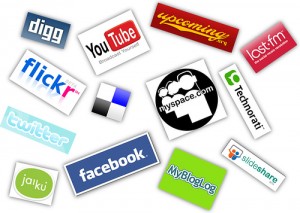Social Media Website Guide
School is in session. In recent weeks, we’ve learned basic social media terms and deciphered social media abbreviations. Now it’s time to tour the social media world by learning about a few of the popular sites businesses use to connect with audiences.
Digg: The community-based site allows users to share web articles and blog posts they find interesting. Other users vote on the submissions, which can be text, videos, or podcasts. When content receives enough votes, it’s posted on the site’s front page. Businesses add content to Digg to increase online awareness and generate exposure.
Facebook: This social network boasts more than 500 million users. Sites users set up profiles and share information, photos, and content with other users. There are a number of ways businesses can utilize Facebook, including posting corporate profiles and updates. The social site has also recently added Facebook Locations, which, like Foursquare, allows users to share their location with friends.
Flickr: A photo and video hosting service, Flickr allows users to share the personal photos and videos they post on the site. Companies might upload photos of products, services, or their team. In addition, businesses that offer custom handmade products use the site to showcase product options, such as fabrics or colors.
Foursquare: This is a location-based social site that allows user to share information about their location. Using web and mobile applications, registered users connect with friends by “checking in” when they reach a venue. The site is a very social way of nurturing customer loyalty. For example, when a particular user checks into Jenna’s Coffee Shop more than anyone else over a 60-day period, Foursquare names the user “Mayor” of the shop.
Twitter: The microblogging service allows users to send messages as well as read other users’ messages—all in 140 characters or less. Businesses use Twitter to send messages, specials, and updates about the brand. Social media monitoring also allows businesses to tap into what consumers are saying—or tweeting—about the company’s products or services.
YouTube: This video sharing site allows users to upload and share content as well as view videos. Businesses use YouTube to upload presentations, advertise products, introduce the staff, share customer testimonials, and run user-generated content (UGC) contests.
Do you need a presence on all of these sites? Maybe…or maybe not. To learn more about where and how your brand can effectively engage its target market, contact the business analysts at Social Strategy1.




[...] brand to the social media world. While an increasing number of businesses recognize the power of social sites, there are still a few late adopters who have fears about using this tool. Here are three common [...]